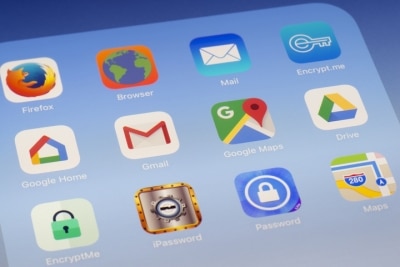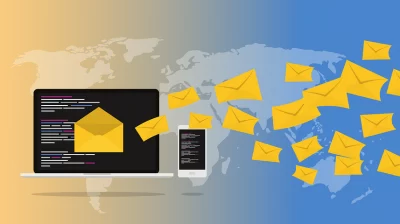How CNN, Morning Brew and Vanity Fair Use Triggered Messages
March 10, 2020

They enable true one-to-one personalization and generate more than three-quarters of email ROI, so triggered messages are imperative for any retailer marketers to master. While the media industry largely lags when it comes to personalization, it doesn’t have to. As publishers continue to diversify their revenue streams beyond advertising and embrace newsletters, they’re also increasingly realizing triggered messages‘ role in using email to drive traffic. Here’s how CNN, Vanity Fair, Morning Brew and more demonstrate effective use triggered email messages:
Welcome Emails: CNN and Morning Brew
Welcome emails have an unusually high open rate: about half, according to MarketingSherpa. And why wouldn’t they? When someone signs up for a publisher’s email newsletter, they’re sending the message loud and clear that they want to hear more. This introductory triggered message is a publisher’s opportunity to let readers know what to expect.
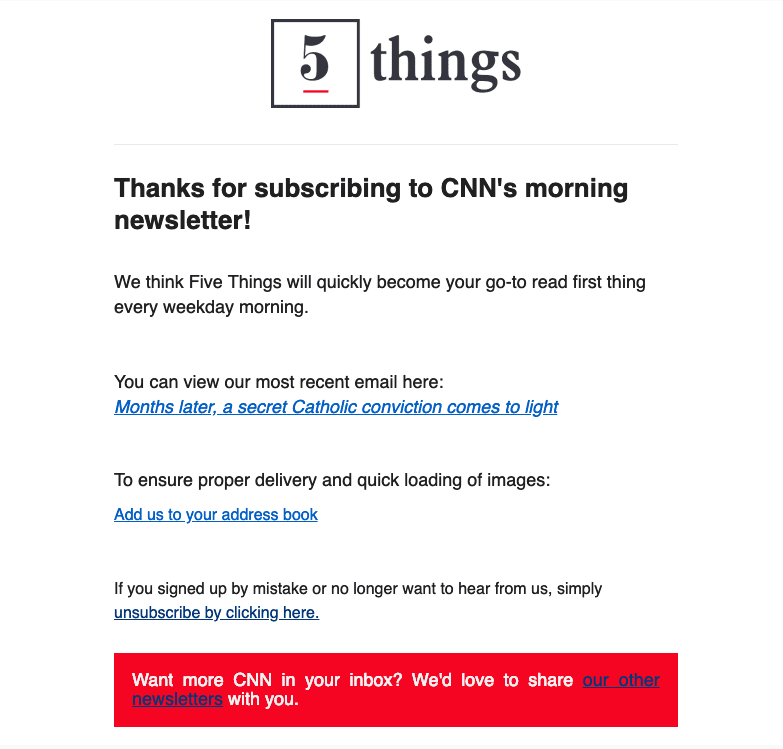
CNN publishes a ton of content with something for everyone. Markets Now from CNN Business; COVER/LINE, “where politics meets pop culture;” and 5 things are just three of the company’s 15 newsletters. The latter breaks down the buzziest topics in five minutes or less, which CNN makes clear in this welcome email. There’s also a link to the most recent edition, helping new subscribers understand what’s in store.
Morning Brew takes a different, but equally important, approach. It’s not uncommon for messages from new senders to go straight to spam. Morning Brew uses its first email to ensure that doesn’t happen.
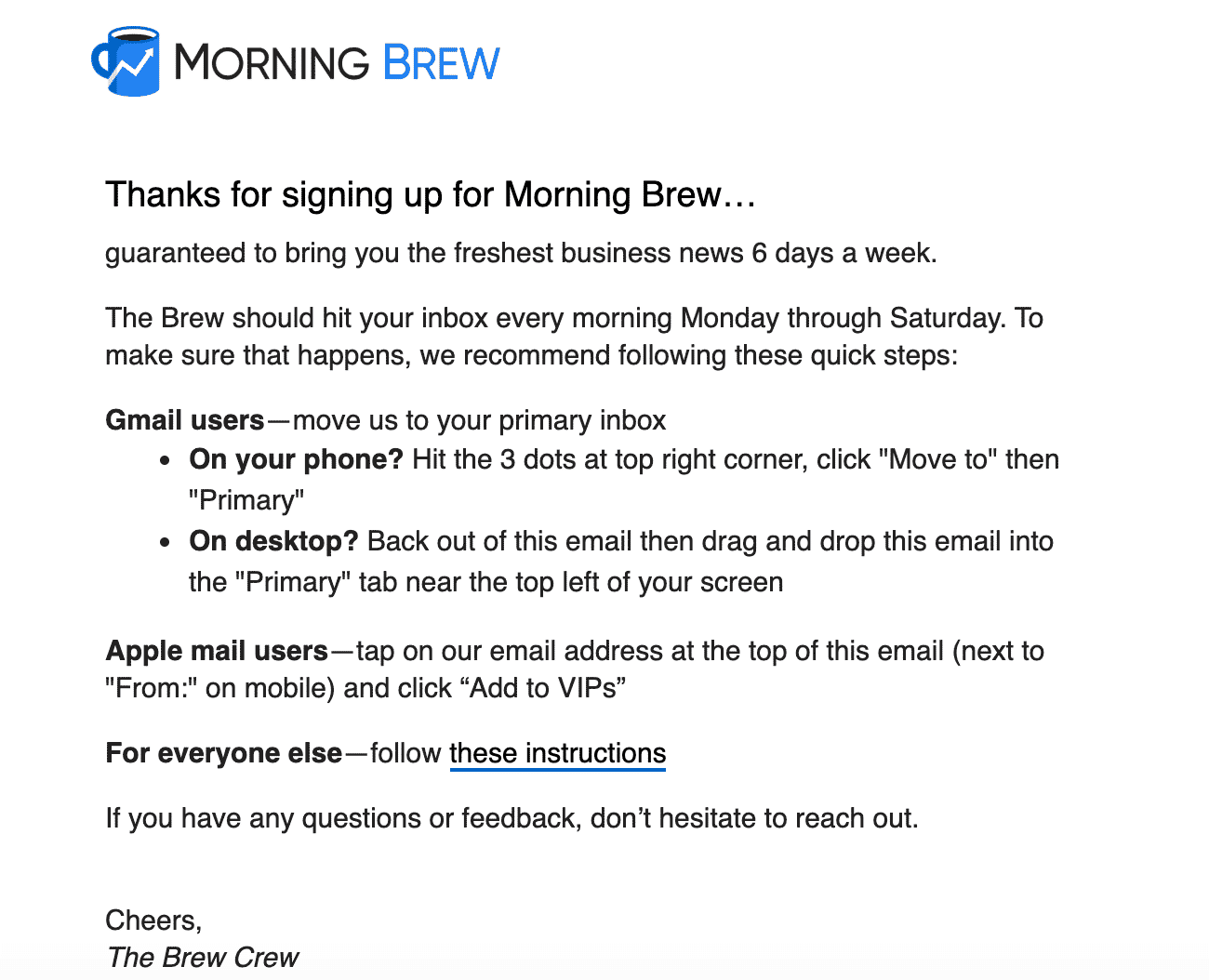
Abandonment: Netflix
Cart and browse abandonment emails are great revenue opportunities for retailers. The customer has already expressed interest in the abandoned items and in many cases, can be nurtured into a purchase. According to SaleCycle, consumers open nearly half of all abandoned cart emails with one-third of those leading to a purchase.
For a media company, this strategy doesn’t cross over the same way as a welcome email. Imagine if you X’d out an article only to receive an email from The New York Times along the lines of, “You didn’t finish reading…” Still, there are comparable tactics. One is Netflix’s “Continue Watching” carousel, which makes it way to email.

Post-Purchase: Vanity Fair and The Wall Street Journal
When a customer converts, post-purchase emails provide marketers with the opportunity to engage them and encourage loyalty, setting the stage for the next purchase. Vanity Fair demonstrates this tactic with the media equivalent of a replenishment trigger from a brand like Sephora. Many post-purchase emails have incentives; Vanity Fair offers a free gift subscription to fast-acting readers.

The Wall Street Journal uses triggered messages to upsell. This email makes it clear that upgrading to a premium membership will be worth this subscriber’s while, teasing out exclusive perks.
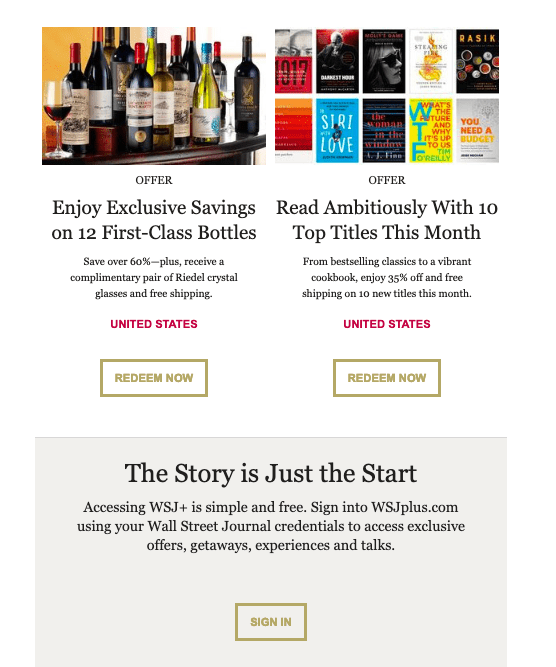
Re-Engagement: theSkimm
You liked theSkimm enough to sign up for their daily email, similar to the 5 things newsletter from CNN. You’re a regular reader, but over time, your interest wanes. Eventually, theSkimm moves to your spam folder.
theSkimm’s irreverent tone is its trademark, which is what makes this re-engagement email so well done. The humor reminds the reader what she liked about the brand in the first place, enticing her to re-engage.
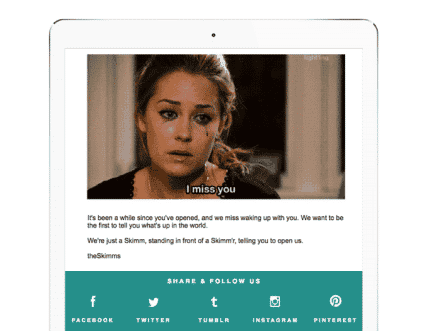
Proactive Triggers: Hulu and The Washington Post
In our guide, we mostly stuck to the basics and didn’t get into all the less common triggers around events such as upcoming trips and recent moves. However, that’s not to say these triggers don’t have value for retailers and publishers alike. The Washington Post uses the election as an on-brand trigger, showing regular political readers what they have to gain by subscribing.
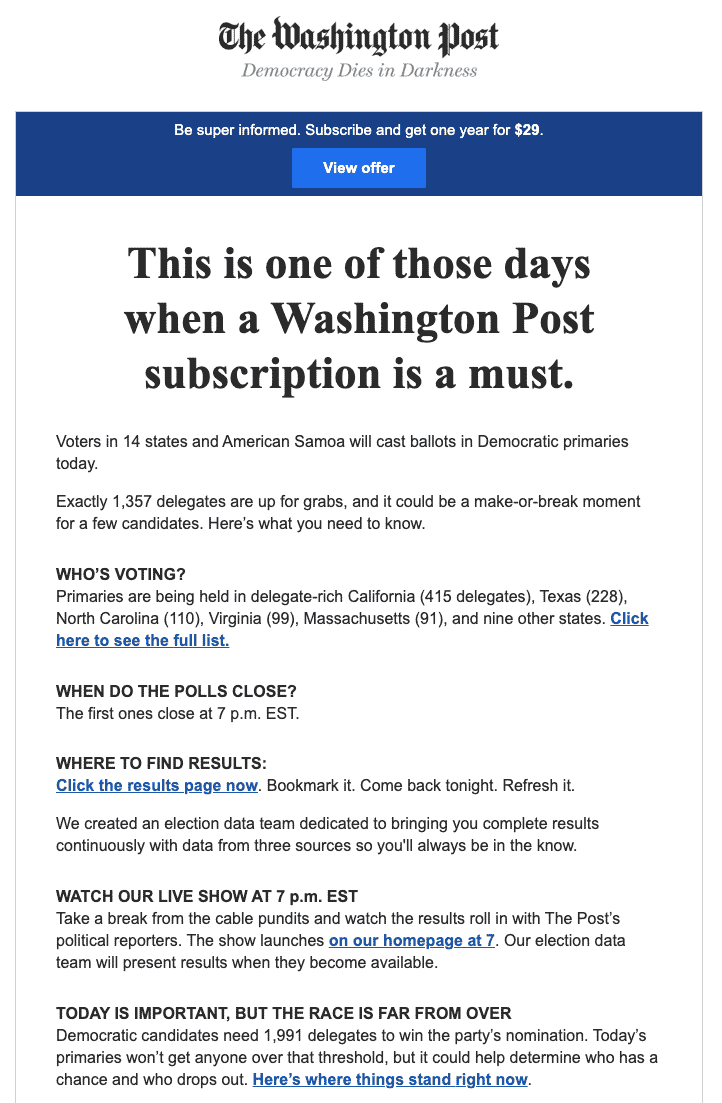
Hulu is another media brand that uses proactive triggers. This email is executed well because it combines multiple triggered message tactics at once. This one went out to a non-subscriber so it’s got traces of browse abandonment on top of the birthday wishes, which have a 481% higher transaction rate than other marketing emails.

The State of Brand Loyalty in the U.S. in 2023
Related

